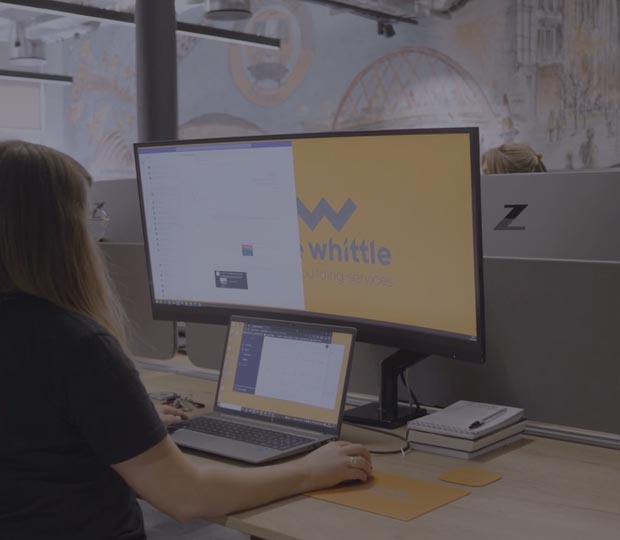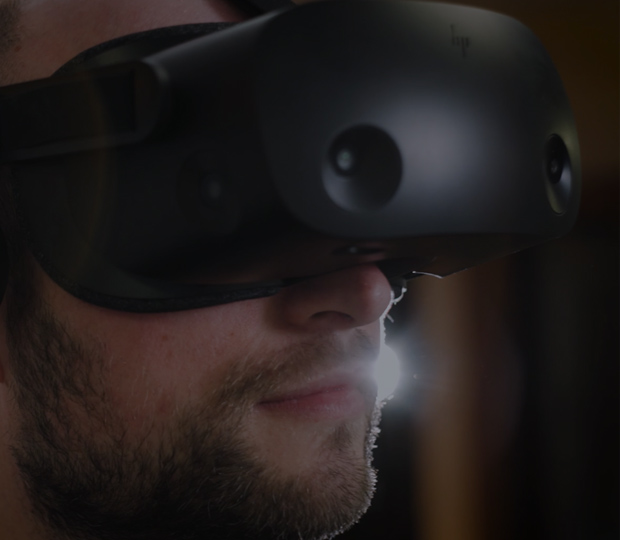Wallace Whittle
Read more

Publish date: 29.09.23
Central to this technological toolkit is the workstation, a critical tech platform that plays a pivotal role in shaping how the industries work. In this blog post, we will delve into the essential technology needs for AEC and explore how the very best hardware with flexible billing can empower AEC businesses to excel in their respective fields.
Perhaps the most fundamental requirement of a workstation in the AEC industry is raw processing power. AEC software applications, such as AutoCAD, Revit, and Rhino, demand significant computational resources to handle large-scale projects efficiently. The ability to manipulate complex 3D models, render high-quality visualisations, and run simulations without waiting time or lag is essential for productivity.
Z by HP use multicore Intel i9 and Xeon processors to ensure these tasks are completed efficiently.
High-quality, detailed visuals are integral to the AEC industry. Architects, engineers, and designers rely on workstations with dedicated graphics processing units (GPUs) to create realistic renderings, analyse structural integrity, and simulate lighting conditions. GPUs designed for workstations not only accelerate rendering but also provide the real-time speed needed for precision modelling. GPU Technologies like NVIDIA Quadro and AMD Radeon RTX are popular choices in the AEC sector, with both specified as standard within all of our HP AEC builds.
AEC projects generate vast amounts of data, including 3D models, blueprints, specifications, and project documentation. Workstations need substantial storage capacities, often in the form of solid-state drives (SSDs) or high-speed NVMe drives, to store and access these files seamlessly. RAID configurations can also provide data redundancy and security, which are crucial for project continuity.
Complex multitasking is a common practice in the AEC industry, with professionals often working on multiple software applications simultaneously. To ensure smooth performance, workstations should be equipped with ample RAM. AEC workstations typically require a minimum of 32GB of RAM, and for more demanding tasks, 64GB or more may be necessary.
See our guide to workstation hardware here
Efficiency is key in AEC projects, and having dual monitors can significantly boost productivity. Workstations should support multiple displays to allow professionals to view and compare designs, reference materials, and project documentation side by side. Dual 4K (or even 8K monitors) can provide the necessary screen real estate for these tasks.
A popular choice is the HP Z40c curved 40” conferencing monitor as this allows plenty space on the one monitor, splitting the screen into zones, with sound and conferencing facilities built in.
The AEC industry is constantly evolving, with software applications becoming more resource-intensive and project requirements growing in complexity. Workstations should be scalable, allowing for hardware upgrades as needed. This future-proofing ensures that the workstation can adapt to changing demands without the need for a complete replacement.
Z by HP workstations feature tool-less disassembly and easy access to allow for quick and easy upgrades as and when needed.
AEC professionals often work on tight deadlines, making system downtime a costly setback. Therefore, reliability and durability are non-negotiable when selecting a workstation. All of our workstations come with manufacturer’s support as standard and undergo rigorous testing – including ISV certification – to ensure they can withstand the demands of the industry.
While desktop workstations have traditionally been the preferred choice for most AEC tasks, there is a growing demand for mobile workstations or laptops – from slim ultrabooks to powerful desktop replacements. Field visits, client meetings, and on-site inspections require portable and capable tech that can run AEC software effectively. HP Z mobile workstations such as the Firefly, Power, Studio, and Fury with powerful CPUs and GPUs are designed to meet these requirements without compromising performance.
Xeretec Device as a Service (DaaS) is a subscription-based model that provides businesses, including Architecture, Engineering, and Construction (AEC) firms, with hardware devices (e.g., workstations, laptops, tablets, and smartphones) along with services such as maintenance, support, and device management. DaaS can be particularly beneficial to AEC firms in several ways:
Cost-Efficiency: DaaS allows firms to access the latest devices without a significant upfront investment. Instead, they pay a predictable monthly fee, making it easier to manage their IT budgets.
Scalability: AEC projects can vary widely in scale and scope. DaaS enables firms to scale their hardware resources up or down as needed. They can quickly acquire additional devices for new projects and return or upgrade them when projects are completed, ensuring they always have the right equipment without excess costs.
Hardware Refresh Cycles: Technology in the AEC industry evolves rapidly. With DaaS, AEC firms can ensure that their devices are always up to date. We can provide regular hardware refreshes, allowing firms to work with the latest technology and stay competitive.
Reduced IT Overhead: Managing a fleet of devices can be resource-intensive for IT departments. We can take on responsibilities such as device provisioning, maintenance, updates, and troubleshooting. This frees up internal IT resources to focus on strategic initiatives rather than day-to-day device management.
Enhanced Security and Compliance: We can also provide cyber security and compliance services as part of our additional service packages. This is crucial for AEC firms that handle sensitive client data and proprietary designs.
Streamlined Device Management: We provide management tools that allow AEC firms to monitor and manage their device fleet efficiently. This includes tracking usage, performing remote diagnostics, and ensuring all devices are up-to-date and secure.
Backup and Data Recovery: Data loss can be catastrophic for AEC projects. We provide essential backup and data recovery services, safeguarding project files and intellectual property. This can be especially valuable in the event of hardware failures or accidents.
Environmental Responsibility: We offer environmentally friendly services, such as device recycling, ensuring that no hardware ever goes to landfill, which align with AEC firms’ sustainability goals.


